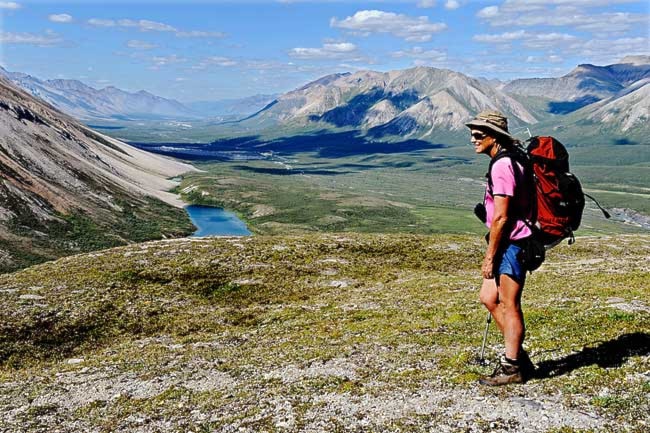The Yukon government is challenging the findings of the Peel Watershed Planning Commission, arguing that 80 per cent of the region doesn’t have to be protected from mining.
The government position, laid out in a four-page news release issued Friday afternoon, is vague about what needs to be changed, provides no specific changes and offers no hard numbers about what should be protected.
The commission’s call for 80 per cent was released last December, and First Nations have since called for 100 per cent protection, drawing the ire of the mining community.
After a year of refusing to disclose its position, the government finally picked sides late Friday afternoon.
“In proposing a high level of protection for such a large portion of the region, the commission appears to have interpreted the Chapter 11 objectives and processes in a way that is inconsistent with the Yukon government view of the final agreements,” says the news release.
Chapter 11 is a section of the Umbrella Final Agreement calling for comprehensive land-use plans, which are meant to guide development into the future.
“The Yukon government believes the plan should provide a more balanced consideration of the current and future uses in the region and propose management options that would allow for those uses to continue,” the release says.
During the five years of the commission’s work, mining companies have swamped the region with nearly 10,000 claims.
Now, the government wants to ensure those claims aren’t rendered worthless through conservation.
There must be “options for surface access for existing interests and future development opportunities,” the release says.
The vague release only refers to larger disagreements the government has with the commissions’ report, a 300-page document that researched wildlife, water, mining values and traditional uses of the land for more than five years.
When the commission tabled its report a year ago, they said it was impossible to merge mining interests with those of First Nations and conservationists.
“We drew one important conclusion: not all resource conflicts are manageable by techniques – some conflicts are intractable,” says the commission in its plan.
“We were at a fork in the trail and had to choose to manage for one cluster of interests or the other,” it says. “We were told this in so many words by industry, by the First Nations, by the wilderness advocates, by people in general and by the logic of the situation.”
The government has apparently picked the other fork in the trail – while still claiming to stand for balance.
“The government supports the internationally accepted Precautionary Principle,” the release says.
It just wants the goalposts for “precautionary” moved slightly in favour of mining.
The “Yukon government diverges in the interpretation and implementation of the principle and the level of risk to be managed,” it says.
The release includes muddy sentences that lack clarity.
On the topic of the precautionary principle, the release says: “The planning area has a natural mix of resources and Yukon government believes that there should be the ability to accommodate mixed uses for society’s need that errs on the side of caution with protection a consideration through determination of level of risk.”
A call to Energy, Mines and Resources spokesperson Rod Jacob for clarification was not returned before press time.
The government wants to simplify the commission’s method of splitting up the Peel into 19 sub-regions.
“The recommended management regime is complex and Yukon government encourages a re-evaluation of the zones and the associated management recommendations,” the release says.
The smaller land-use plans of these different regions should be amalgamated because “the management recommendations associated with these zones appear to be very similar.”
There is no mention of which sub-regions should be specifically united.
The commission recommended a permitting process for amending the plan in the future.
The government wants to scrap the commission’s permitting plan because it’s “unnecessarily complex and onerous.”
Ground access in almost the whole watershed will require a plan amendment, says the release.
“This will not only necessitate the ongoing existence of an overseeing body (i.e. the commission) to undertake this task, but will establish an ongoing, ad-hoc, resource-intensive process to review each new project,” it says.
“This will be a cumbersome and impractical way to address issues related to surface access.”
The government “believes a less process-intensive method for dealing with access” can be created.
The release closes with a call for a less complicated plan.
“Generally, Yukon government would like to see a more streamlined regional land-use plan and the existing approved North Yukon land-use plan could be used as a model for size and readability,” the release says.
The government met with the four First Nation governments involved in the Peel land-use plan on Tuesday.
That was a day before the deadline the government gave itself in a letter of understanding it signed with the First Nations in January.
The government also announced that a one-year negotiation that began after the commission’s report was released last December should be extended.
The parties – Yukon, First Nation of Na-cho Nyak Dun, the Tr’ondek Hwech’in First Nation, the Vuntut Gwitchin First Nation and the Gwich’in Tribal Council – will rewrite the January letter of understanding.
The one-year staking moratorium that began in February will also be extended for another year, a second news release says.
Contact James Munson at jamesm@yukon-news.com
